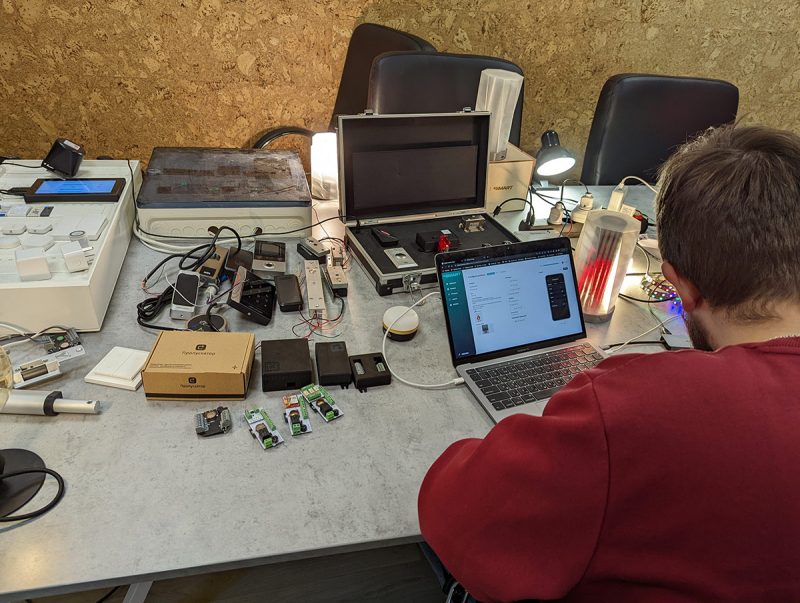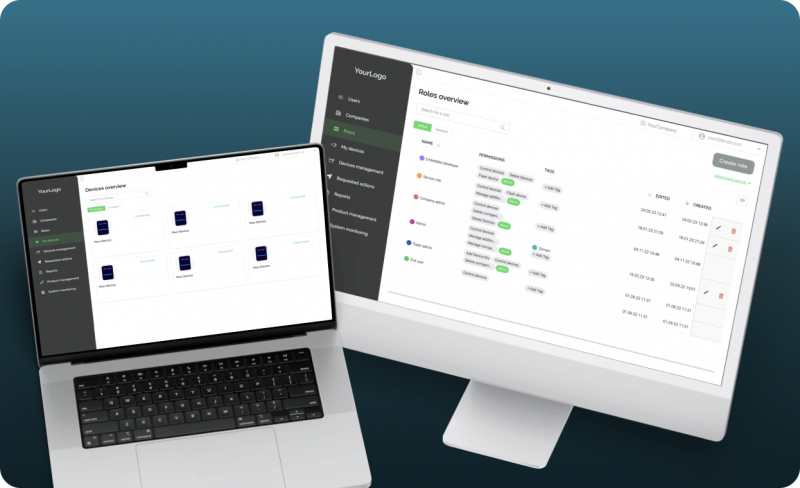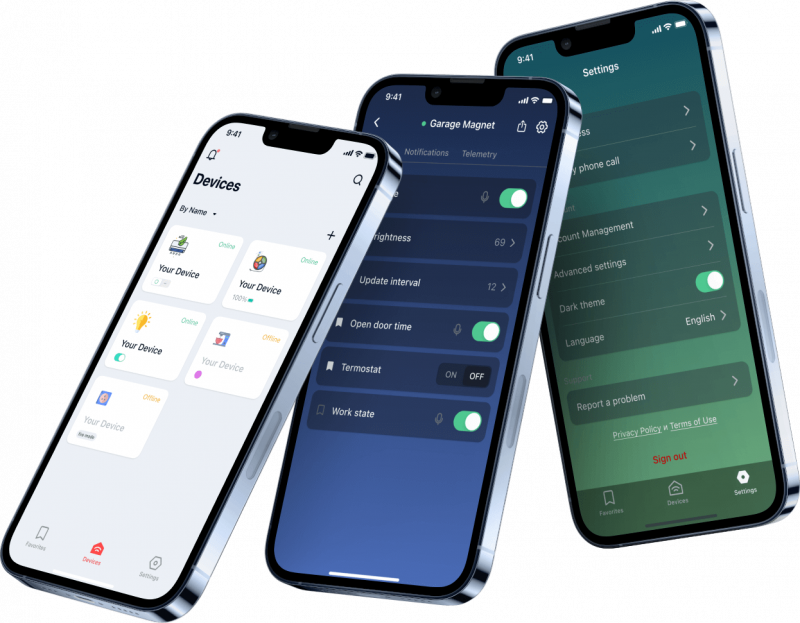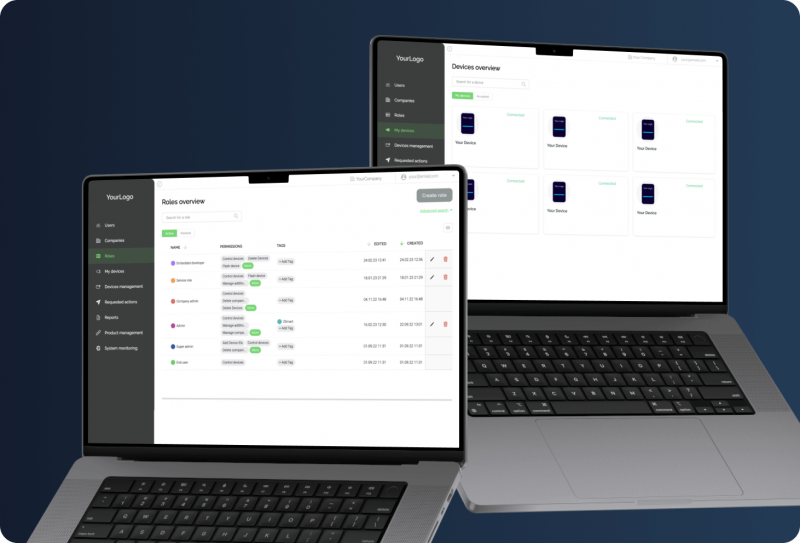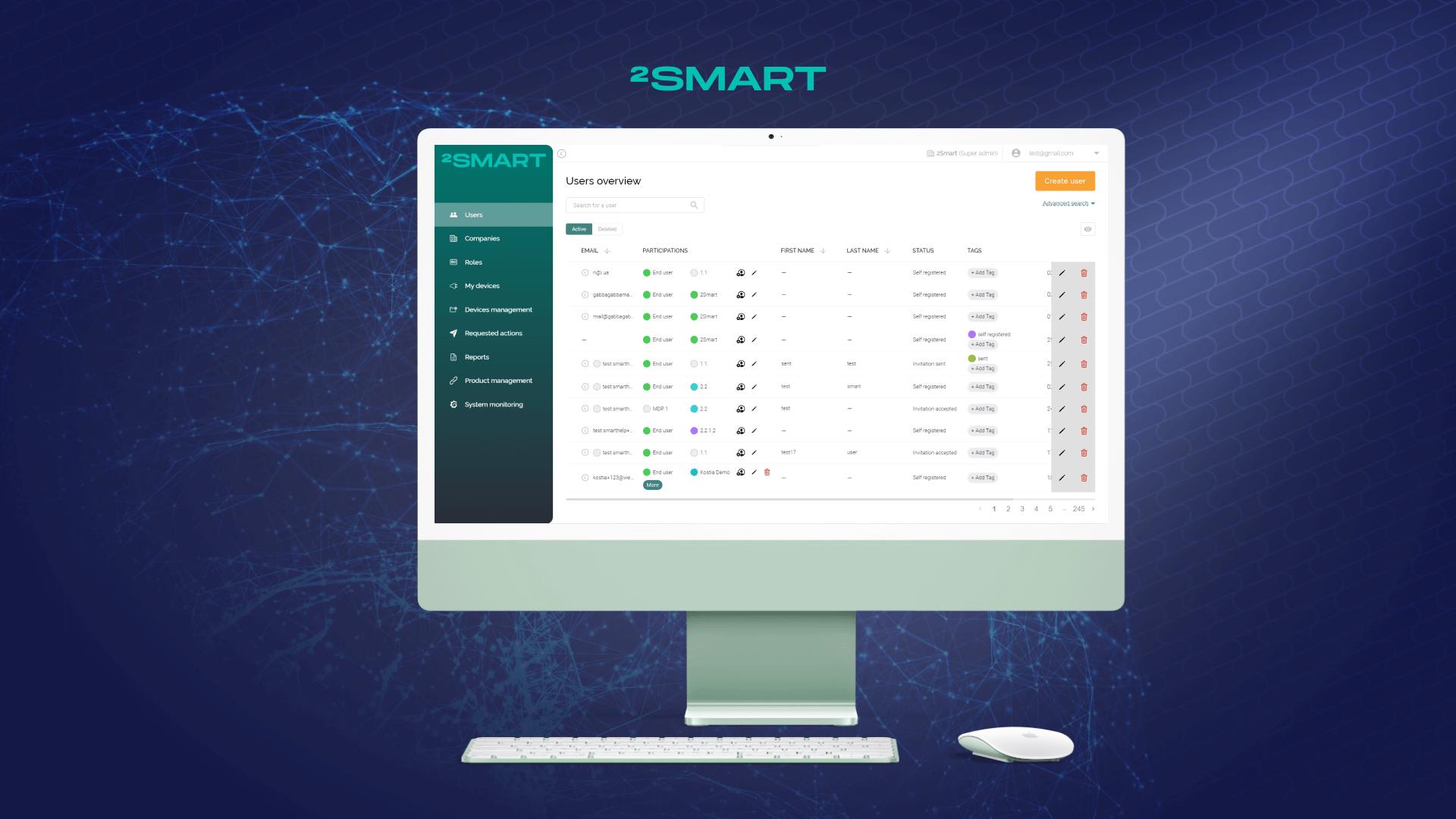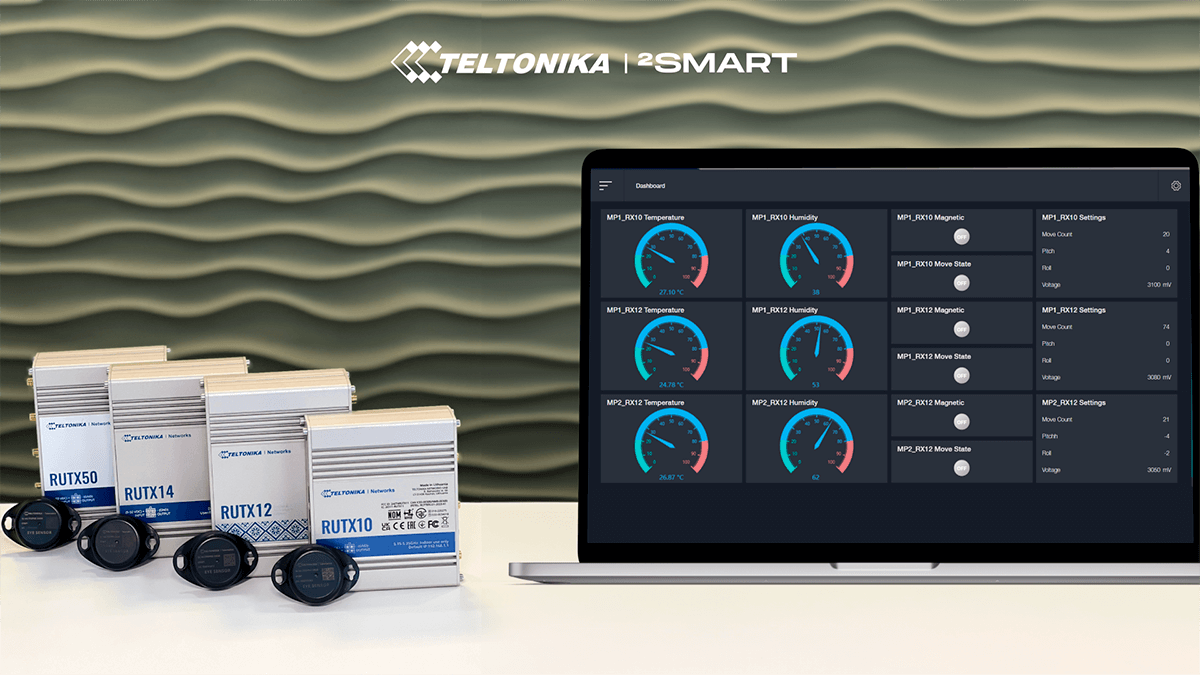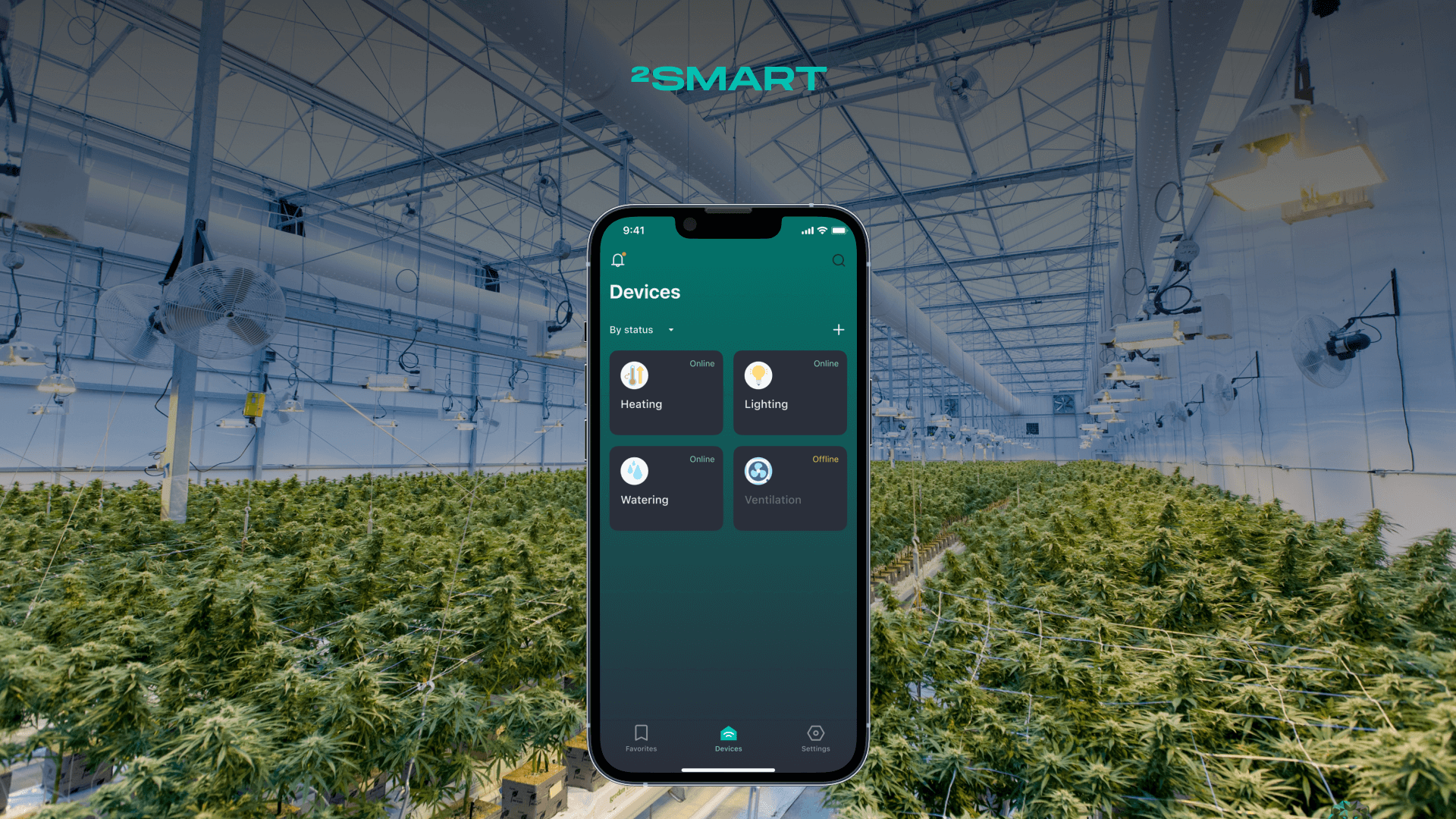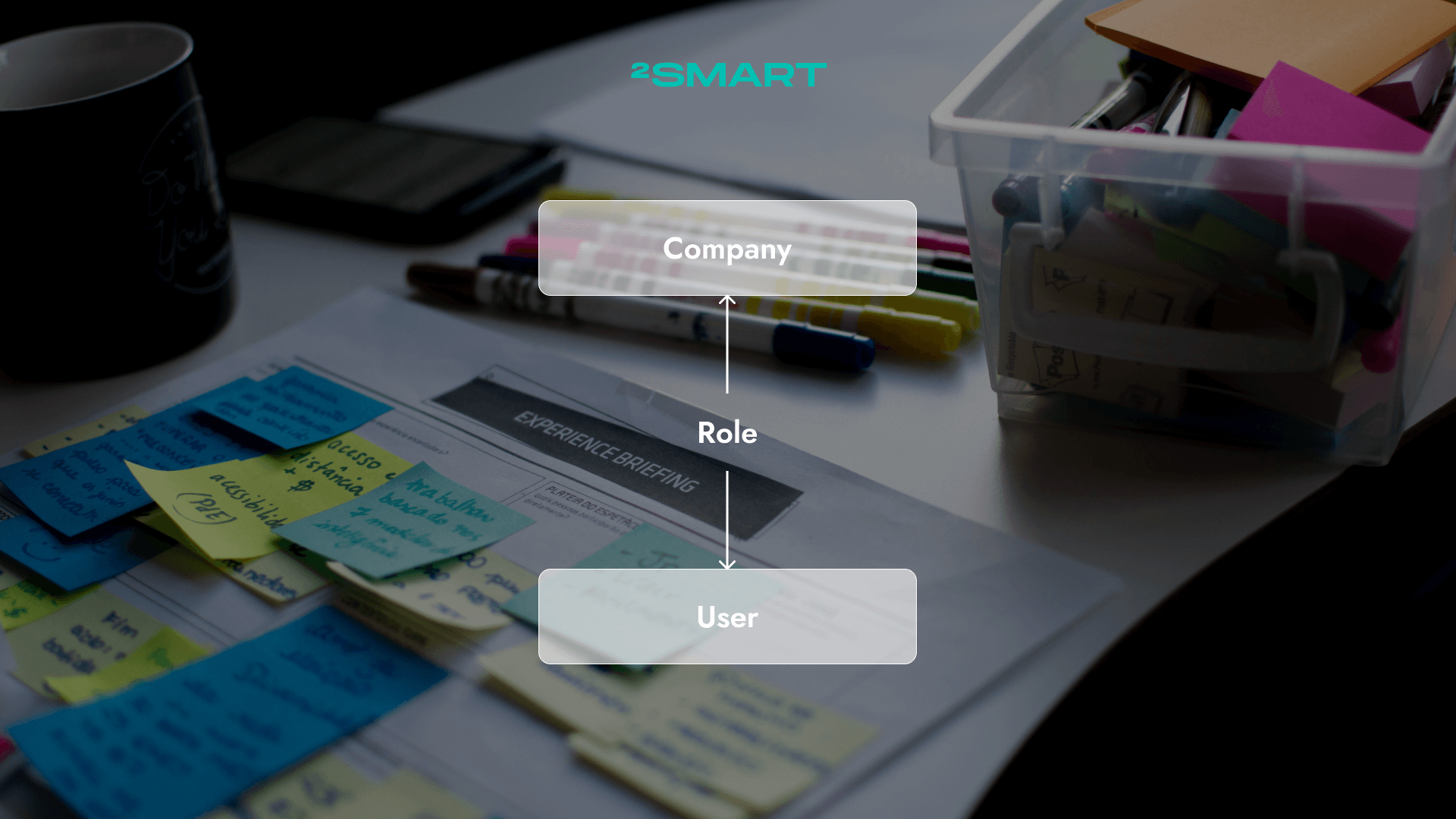Table of contents:
What is good about the white-label model for IT solutions, and what are its possible disadvantages – thousands of materials on the web are devoted to this topic. Still, almost all of them reveal it only in general terms. However, what does implementing a ready-made IT product under your brand look like in practice, how long does it actually take, and what is required of you as a customer? The 2Smart team answers all these questions by discussing their experience implementing white-label Internet of Things solutions for business clients.
What is white-label, and who is this model suitable for
The advantages of the white-label model have been described many times on the web and are known to everyone considering a white-label to start or grow their business. For example, we previously explained the pros and cons of white-label mobile applications.
Recall that white-label means a ready-made solution that can be branded and launched on the market under the customer’s trademark. Someone has already developed and tested this solution, and other businesses use it. Typically, the developer company provides technical support and timely updates.
Compared with the custom development of a new product, the main advantages of this concept are the speed of implementation and the reduction of costs for starting a business. The company may not be distracted by gathering a team of developers, setting a technical task for them, and implementing and testing the solution. If there is already a white-label product on the market with the required functionality, it is enough to contact its developers and request its presentation and access to the demo version. If the finished solution meets the company’s request, it remains to agree on the contract terms and order the product’s branding. It’s all. Once the branded solution is deployed, the company is ready to go to market.
Of course, white-label is not suitable for every business, and custom development remains a priority for someone. The factors that matter can be anything: the company’s scale, the novelty of the solution needed, the specific requirements of the customer and investors, etc.
However, many businesses choose white-label as the best option for a quick start. And many companies in the future evaluate this choice as absolutely correct when the white-label product turns out to be ready for challenges that they did not even know about at the start.
How long does it REALLY take to implement a white-label solution: from the first touch to launching a business
The white-label IoT solution from the 2Smart team consists of three elements:
- Mobile app for end-users.
- Web application for end-users.
- Enterprise management platform for business users.
The customer can choose only a mobile application or a mobile app and a web app for the end-user without a business admin panel. Therefore, the implementation time may be shorter. Below we will consider the timing of implementing all the listed elements of the white-label solution.
Our experience suggests that implementing a white-label solution for an IoT business takes about 15-20 weeks. The minimum period is about 10-12 weeks. Since two parties are involved in the process, and the customer needs to remain actively involved at certain stages, their schedule matters.
If the customer asks us to implement the solution even faster, we can optimize internal processes and reduce this time. However, we ask clients to warn us of the urgency in advance and, for their part, to promptly assist us at those stages at which we cannot do without their participation.
This is how our team builds the process when a new customer contacts us with interest in a white-label solution:
- Acquaintance – the first personal contact in the form of a videoconference, where we find out the customer’s needs and tell how our solution meets them.
Duration: up to 1 week after receiving the request from the website or by email. - Platform demonstration – a detailed presentation of the features and capabilities of 2Smart solutions, providing access to a demo version of the product.
Duration: up to 1 week after the acquaintance stage (the period can be reduced by conducting a demo already at the acquaintance). - The choice of the necessary functionality and platform mode (b2b or b2c) – the period when the customer studies our product on his own, asks additional questions, and determines the final list of required features.
Duration: up to 1 week. - Agreeing the terms of the contract and signing it.
Duration: 1 week unless additional approvals and significant changes to the contract text are required. - Start of work – forming a team of specialists within 2Smart and the final coordination of details.
Duration: up to 2 weeks. - Creation and approval of the design – the 2Smart designer uses the brand book or other customer materials to brand the web and mobile application.
Duration: about 1 week. - Self-registration by the client of accounts in third-party services and choice of a virtual machine provider for platform deployment.
Duration: about 1 week. - Branding and publishing web and mobile applications.
Duration: 4-6 weeks. - Presentation and acceptance of the white-label IoT solution.
Duration: from 2 weeks (depending on the time the customer requires for user acceptance testing and the time needed to review the mobile application in the markets). - Support and maintenance.
Duration: the period of validity of the license.
Let’s take a closer look at what each of the listed steps for deploying a white-label IoT solution from 2Smart consists of.
Step 1: Acquaintance
First of all, together with the customer, we must be sure that the 2Smart solution suits them. During the first live contact in a video conference, we talk about ourselves, our products and find out the client’s needs. If our solution meets these needs, we can proceed to the next steps.
Also, following the results of the first call, we are ready to provide the necessary support documentation and the Service Level Agreement text. However, first, we ask the customer to sign a Non-disclosure agreement.
- Duration: about 1 week after receiving the request from the website or by email.
- Cost: free.
Step 2: Product demonstration
At this stage, we show in detail how our products are arranged and what features are implemented inside them. We provide the customer with all reference materials about the 2Smart solutions that we have.
During the demonstration of the 2Smart web application, we explain the difference between its B2B and public B2C modes. If the customer is interested in the B2B mode, the enterprise business platform, we send them credentials to access its demo version.
B2C mode is a public platform 2Smart Cloud, where the customer can register themself to test its capabilities when creating a real IoT product.
Some customers only want a white-label mobile app for end-users of their IoT devices. For them, the choice between B2B and B2C platforms is irrelevant.
We pay great attention to the stage of demonstration of 2Smart solutions because we make sure that the customer is happy due to our cooperation. To do this, it is essential that the customer’s expectations fully coincide with the reality that we can realize. We demonstrate how the ready-made functionality of the 2Smart platform can solve the tasks set by the client and talk about the limitations of our product if we understand that it does not fully comply with some points of the customer’s requirements.
Quite often, our customers at the demonstration stage learn about the features of the 2Smart platform that are not obvious to them or seem unnecessary. However, in the future, with the growth of their business, these features become necessary.
- Duration: a few days after the acquaintance stage, sometimes the demonstration takes place on the day of the acquaintance.
- Cost: free.
Step 3: The choice of the required functionality by the customer
Several additional calls or several days of correspondence are usually required for the customer to decide on the necessary functionality. First, the customer must choose which 2Smart products they need. The following combinations are possible:
- only white-label mobile app,
- white-label mobile app and web app for vendor (B2C mode),
- white-label mobile app, web app for vendor and business platform (B2B mode).
Some features of the 2Smart platform can be used in different modes, and some can be enabled or disabled at the customer’s request. For example, the features of the 2Smart Cloud mobile app listed below can be excluded from the white-label application:
- classic Telegram bot,
- Telegram bot with a web interface,
- forwarding of device status notifications to messengers,
- Google Home integration,
- IFTTT integration,
- phone call control.
In addition to the features of the mobile application listed above, we can disable the functionality of authorization on the platform using a Facebook account, Google account, or Apple ID.
Because we have international customers working for local markets, localizing applications matters. By default, the platform and mobile app are only available in English. If additional localization is needed, we provide the customer with the file with the text content of the application with a request to translate it.
Thus, at this stage, the final terms of reference are being formed for the 2Smart team to brand ready-made solutions and customize them to the customer’s needs.
- Duration: usually 1-2 weeks and a few calls or emails.
- Cost: free.
Step 4: Contract signing
After agreeing on the scope of work, we can proceed to their implementation, but before that, it is necessary to sign an agreement between our team and the customer. This is necessary for the safety of both parties and the principles of a civilized professional approach to business.
In the contract for white labeling services, we fix the scope of work and their cost. We also provide the customer with licenses to use and scale the 2Smart platform.
The standard text of the contract, which we submit to the customer for approval, is not a dogma. We practice a flexible approach; we are ready for compromises on specific points of the contract and are prepared to discuss any additional conditions. We are also flexible in terms of payment for our services. However, we perform all work only on prepayment. This clause of the conditions is not subject to change.
Since we are a Ukrainian company registered and operating in Ukraine according to local laws, we usually draw up a contract in Ukrainian and English.
- Duration: 1 week if additional approvals and large-scale amendments to the agreement’s text are not required.
- Cost: free.
Step 5: Start of work
Before issuing an invoice for the pre-payment of work, we evaluate the current workload of 2Smart specialists and form a team that will perform white labeling.
To get started faster, we often run the following sixth stage in parallel. In addition, we clarify additional details and draw the customer’s attention to further actions that they will need to take in the following steps of cooperation.
- Duration: up to 2 weeks.
- Cost: free.
Let’s collaborate
We’re empower your business with our technology expertise
Step 6: Creation and approval of the design
The white-label concept comes down to changing the design elements of a native product, so preparing and coordinating the appearance of applications is a crucial step when starting work. At the same time, the customer must remember that only the color design and logo are subject to customization, and the general logic of application design will remain the same as in native ones.
The ideal option is if the customer’s company has a ready-made brand book, based on which the 2Smart designer will create design options for the web and mobile applications. The brand book or other materials the customer provides must contain corporate colors and the company’s logo. You can check out the checklists for the web and mobile apps on the 2Smart Wiki.
If the customer does not have a ready-made logo and other design elements or needs help to create a UI design, the 2Smart team can perform these works as a separate service.
As a result of this stage, the designer provides the customer with several branding options, allowing choosing one suitable one.
- Duration: about 1 week.
- Cost: included in the total mobile and web app branding service price by the signed contract (if no additional services are required to develop a logo etc.).
Step 7: Registration of customer accounts in third-party services
To run a white-label platform, we must use some accounts on external services:
- Developer account in AppStore.
- Developer account in Google Play.
- Gmail account (to set up authorization through Google and create projects in firebase).
- Developer Facebook account.
- Test account for Apple and Google employees.
We consider it correct that all listed accounts belong to the client. Therefore, we ask that customers of white labeling services register all necessary accounts themselves.
We know that the self-registration of some accounts can be difficult and time-consuming. As part of a separate service, we can independently register and set up new accounts and then transfer their credentials to the customer. We can also assist and advise on correctly registering new accounts in third-party services.
If registering new accounts takes too long and prevents implementing a ready-made white-label solution, we use our accounts in third-party services for the first launch. Later we transfer the platform to the customer’s accounts.
To deploy the platform, the customer must also provide us with a virtual machine ordered from any reliable provider. We ask customers to focus on the following minimum list of requirements for a virtual server:
- CPU: 4 cores,
- RAM: 8 GB,
- DISK: 100GB+,
- Ubuntu 20 (or 22),
- Docker 19 and docker compose v1.27.
The minimum machine requirements are the same if the customer prefers a physical server to a virtual one.
If the customer does not have the time or ability to complete this step on their own, we can help with registration with DigitalOcean, as well as with the purchase of a suitable virtual server.
Finally, to deploy a white-label web application, the customer must provide us with a domain name – the site address to which the application will be linked.
- Duration: usually up to 1 week (when using 2Smart accounts – 1 day).
- Cost: included in the total mobile and web app branding service price by the signed contract.
Step 8: Branding and publishing the web and mobile app
After approving the design of the branded apps and getting access to the server where the platform will be deployed, our team proceeds to the main technical stage. The development team implements the approved functionality of the white-label solution, the testing team makes sure that it works correctly, and the management team coordinates these processes.
- Duration: 4-6 weeks.
- Cost: according to the signed contract.
Step 9: Presentation and acceptance of the finished solution
The solution implemented and tested by the 2Smart team is handed over to the customer for user acceptance testing. At this stage, the customer should have an actual IoT device or its prototype, the firmware of which must be compatible with 2Smart.
At the customer’s request, we also hold a presentation of the white-label platform and advise on the use of its features.
- The web application at this stage is already available for use on the server and domain provided by the customer.
- The mobile application is initially provided in a test environment and is closed from users of application markets. After approval from the customer, we send the application to the review procedure for its publication.
Our team fully controls the procedure for publishing a mobile and web application, and the customer does not need to take any additional actions for this.
We provide the customer with a white-label solution with a list of materials for using the platform and provide access for independent support and work with the platform.
- Duration: from 2 weeks (depending on the time the customer requires for user acceptance testing and the time needed to review the mobile application in the markets).
- Cost: included in the total mobile and web app branding service price by the signed contract.
Step 10: Support and maintenance
Handing the finished solution to the customer is not the last stage of cooperation between our team and them. As part of the license for our platform, the customer receives a fixed time of support. As part of it, our team monitors the system, provides advice on emerging issues about the platform’s functionality, fixes possible problems and looks for the causes of their occurrence, and provides platform updates. We make updates and implement new functionality only in agreement with the customer.
If necessary, our team provides additional support beyond what is provided by the license. In this case, the hourly payment model for this service is used.
- Duration: the period of validity of the license.
- Cost: included in the cost of the license.
Platform customization and additional services
Sometimes, the customers of our white-label solution are generally satisfied with the functionality that they learn about during the first demonstrations of the platform, but they ask for additional custom features and additional services. Sometimes such a request appears after the deployment of the solution when, in the process of using it, the customer realizes that they want to have features not in the platform. Such customer requests can be divided into three main groups: assistance with writing firmware for devices, implementation of custom features in the platform, and improvement and expansion of existing functionality.
Assistance with writing IoT device firmware
The platform documentation that we provide to the customer includes materials for developers, based on which they can independently create device firmware compatible with our solution:
- 2Smart SDK and examples of ready-made firmware based on it,
- API documentation,
- instructions.
If necessary, we provide additional advice on developing the firmware or carry out its development by our specialists. In such cases, we will preliminarily agree with the customer on the scope of work, the timing of their implementation, and the budget.
Firmware development by 2Smart specialists is a separate sub-project with a complete SDLC procedure.
Implementing of custom features in the platform
We are ready to implement those custom features that match the concept of our platform and do not destroy its general architecture. As in the case of writing firmware, such work is carried out as part of a separate sub-project with a separate budget and implementation timeline.
We can add custom features to the platform both at the stage of implementing a white-label solution and after its deployment – as part of an additional release of updates or several such releases.
By implementing custom features, we also mean such a service as integrating our platform with ready-made systems or customer devices.
Expansion of existing functionality
This service is similar to the implementation of custom features; however, in this case, it is not about adding new features to the platform but improving existing ones. This can be the addition of custom widgets for a mobile application, a more detailed study of certain platform functions, etc.
How to order a white-label IoT solution from 2Smart
If your company is looking for a white-label IoT platform to launch a business, you can contact us and book a demo of the 2Smart solution. You can leave a message with your contacts using the contact form on our website or write to our email contact@2smart.com. We will contact you and arrange a date and time to demonstrate our solution.
Don't forget to share this post!
Read Next
Let’s dive into your case
Share with us your business idea and expectations about the software or additional services.

